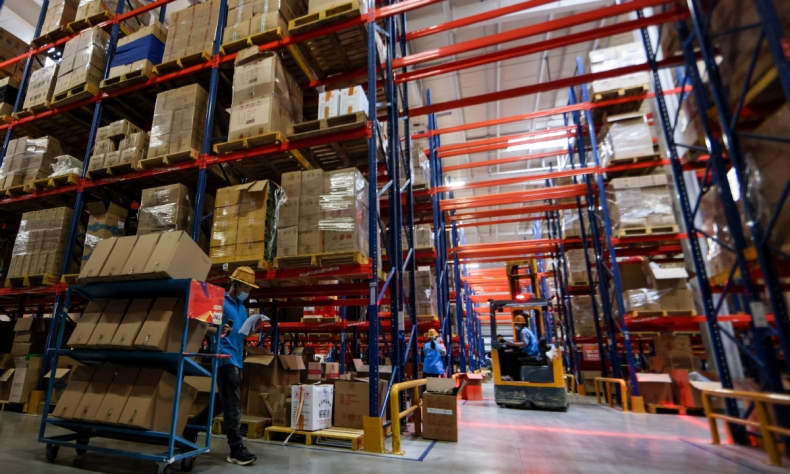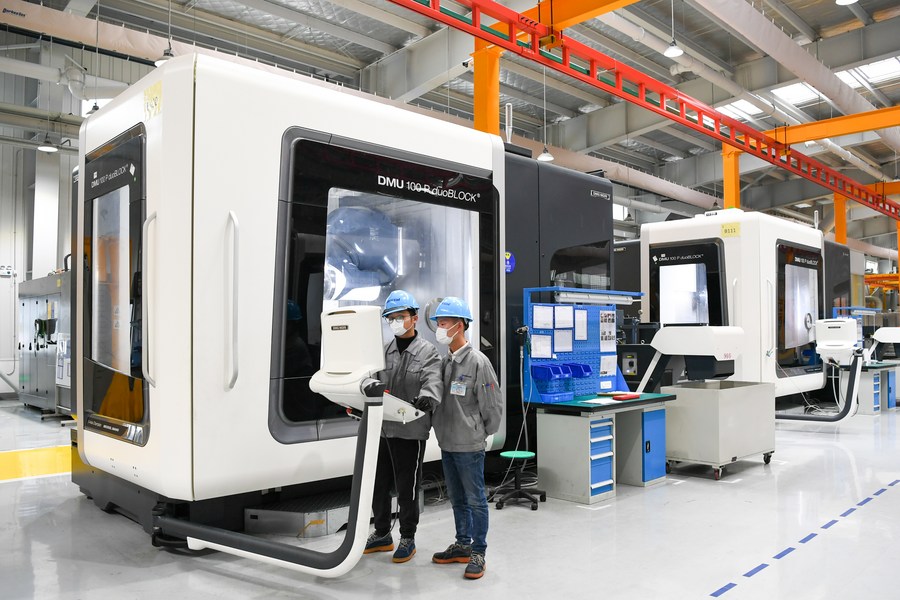Q3 Growth Beats Expectations

The strong momentum of stable economic recovery in the world’s second-largest economy is undoubtedly good news for the still-struggling global economy.
China’s GDP for the first three quarters grew by 3 percent year on year, according to data released by National Bureau of Statistics (NBS) on October 24, half a percentage point faster than in the first half of this year. Based on major economic indicators, China’s economic growth for the third quarter (Q3), which hit 3.9 percent, rebounded compared with the 0.4-percent rate for the second quarter.
The Chinese economy this year has been slammed by heatwaves, COVID-19 flare-ups in big cities including Beijing and Shanghai, as well as a global economic slump caused by stagnation in Western countries. As a result, China’s economic growth tanked from 4.8 percent in the first quarter to 0.4 percent in the second quarter. Although it did not return to the rate seen in the first quarter, Q3 growth beat market expectations.
Primary industry, which in China does not include mining, was up 4.2 percent year on year, and contributed 9.3 percent to Q3 growth. Secondary industry, up by 3.9 percent, and tertiary industry, up by 2.3 percent, contributed 48.8 percent and 41.9 percent to Q3 growth, respectively. The value-added output of the primary, secondary and tertiary industries accounted for 6.3 percent, 40.2 percent and 53.5 percent of GDP, respectively. Compared with last year’s Q3, the GDP share of the primary industry remained the same, while that of the secondary industry inched up by 1.1 percentage points, and that of the tertiary industry edged down. These data reflect the rapid recovery of China’s industrial production and steady growth of the real economy.
Stable growth of the real economy demonstrates that the dynamic zero-COVID-19 policy is appropriate and China’s economic recovery is sustainable.
Within the real economy, different sectors diversify in their contribution to economic growth. The construction sector contributed 0.3 percentage points; the combined contribution of wholesale and retailing, transport, warehousing, postal service as well as the hospitality sector also amounted to 0.3 percentage points, while the combined contribution of the financial sector, telecommunications, software and electronic information technology sectors chipped in 0.8 percentage points. Obviously, high and new technology sectors play a much bigger role in boosting the country’s economy than conventional real economy items, which reveals that China’s pursuit of high-quality economic growth is gaining momentum.

The NBS data also show the industrial chain and supply chain recovered in Q3, which will ensure China not only meets its domestic production demand but also restores its capacity to meet international demand. At the same time, the production and supply of electric power, thermal power, gas and water increased by 8.7 percent over the same period of last year, 7 percentage points faster year on year.
The troika that promotes China’s economic growth, namely investment, consumption and exports, also saw a rebound in Q3.
In the first three quarters, consumption expenditures contributed 41.3 percent to economic growth and pushed GDP up by 1.2 percentage points, while for Q3, these numbers were 52.4 percent and 2.1 percentage points, respectively. Consumer prices increased modestly on the whole and still remained low. In the first three quarters, the consumer price index, a major gauge of inflation, grew by 2 percent year on year, with the first quarter up by 1.1 percent, the second quarter by 2.3 percent and 2.6 percent in Q3.
As for investments, the construction of major projects accelerated and the scale of efficient investment continued to expand in the first three quarters. Capital formation contributed 26.7 percent to economic growth in the period, pushing GDP growth up by 0.8 percentage points. Capital formation contributed 20.2 percent to economic growth in Q3, pushing GDP growth up by 0.8 percentage points.
Looking at a complicated international environment, thanks to the introduction of policies to stabilize foreign trade and foreign capital inflows, China’s foreign trade has shown strong resilience, contributing greatly to the country’s overall economy. In the first three quarters, net export of goods and services contributed 32 percent to economic growth, increasing GDP growth by 1 percentage point. The rates for Q3 were 27.4 percent and 1.1 percentage points, respectively.
The strong momentum of stable economic recovery in the world’s second-largest economy is undoubtedly good news for the still-struggling global economy.
 Facebook
Facebook
 Twitter
Twitter
 Linkedin
Linkedin
 Google +
Google +










